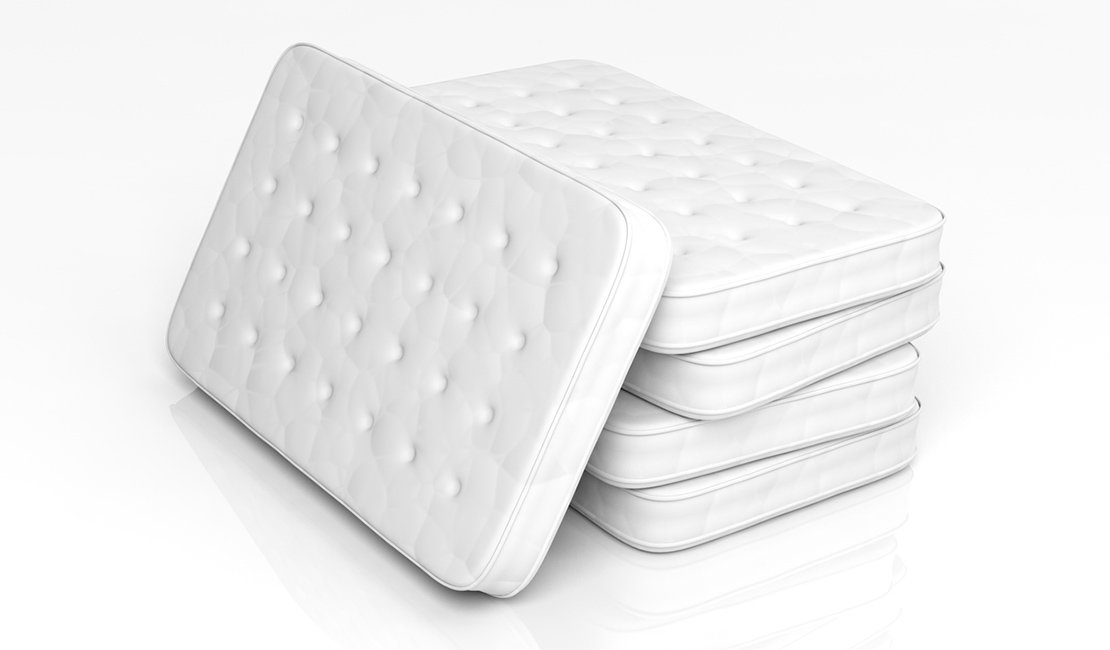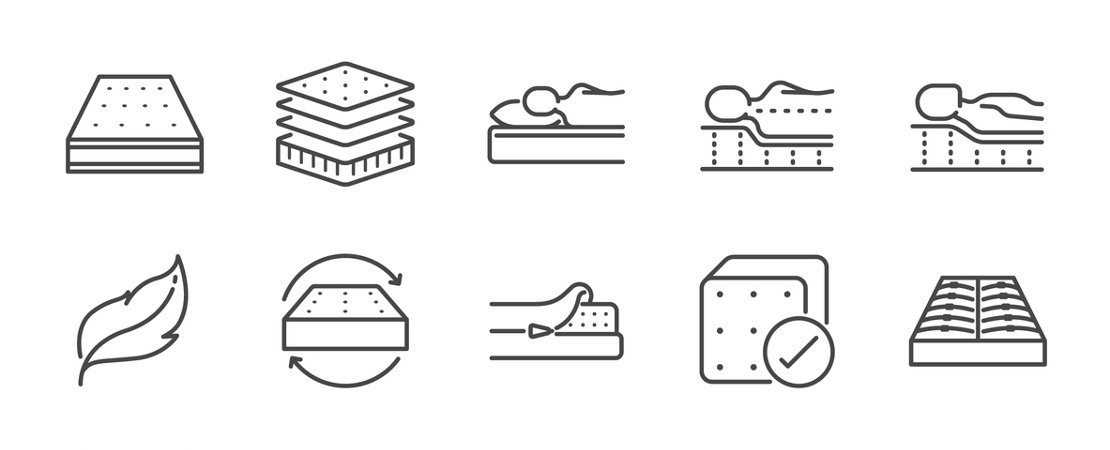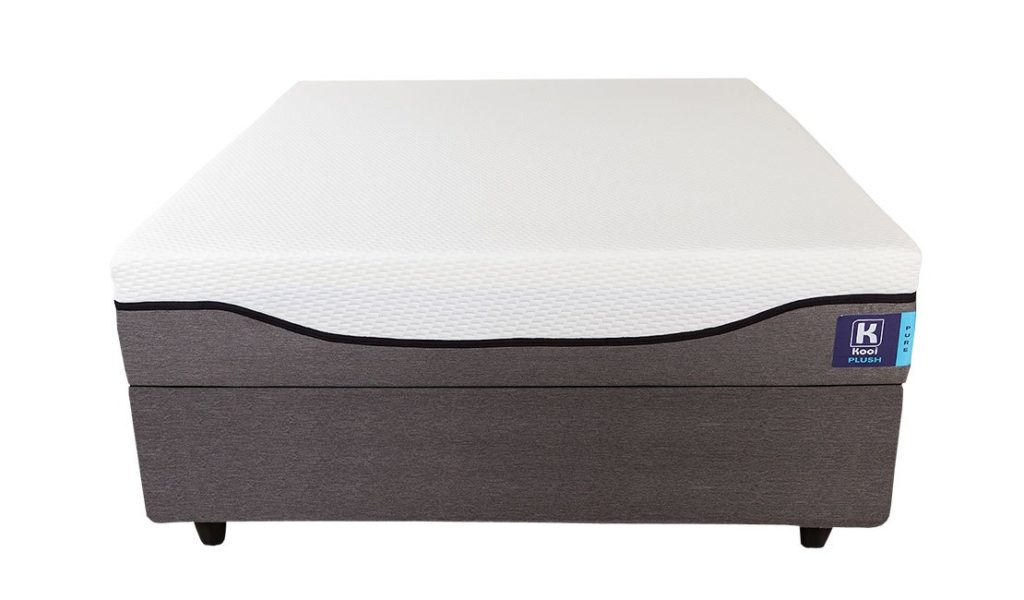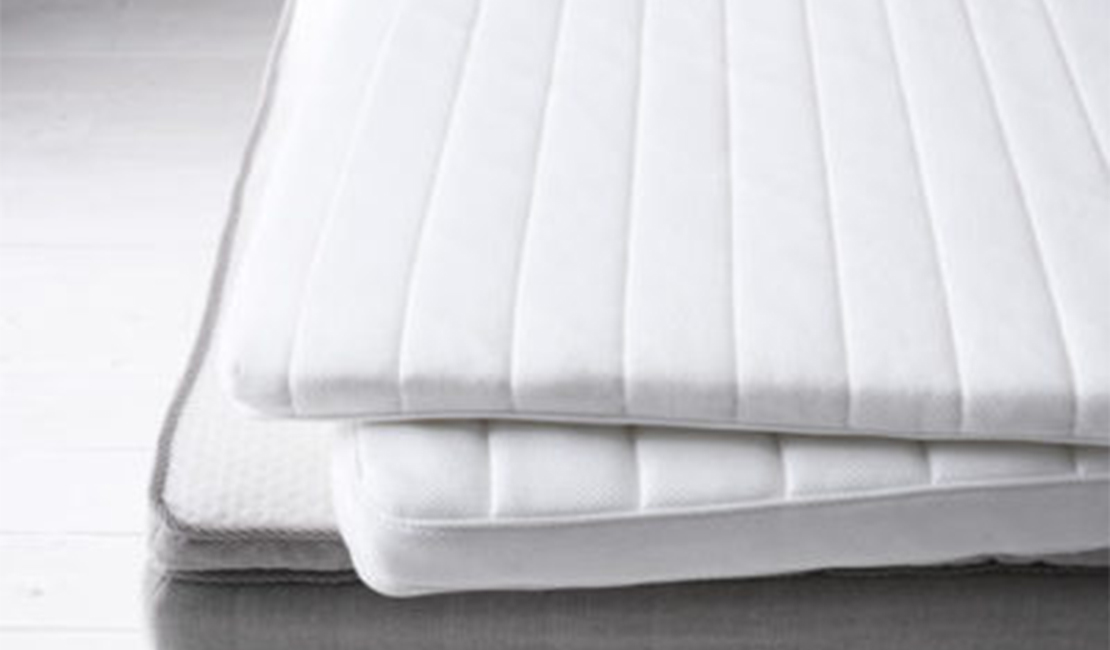Not sure where to start?
Answer a few simple questions and we’ll direct you to your perfect bed.
Enable notifications to get the best news on sales and special offers
If you’re looking to replace your old bed or cater to an expansion in your family, you’ll want to conduct your own mattress research first. This will quickly expose you to lots of complex terminologies and other overwhelming phrases. Therefore, read on to brush up on your modern mattress lingo to prevent any confusion and hopeless mattress shopping.
It’s really hard to satisfy the needs and requirements of all people in the form of one mattress. Think about the tale of the princess that complained about feeling a pea through several layers of mattresses. Indeed, buying a new bed can be a daunting task! Today’s mattresses have evolved and changed rapidly over the years. Consequently, new terminology was invented.

The discovery of REM sleep by Aserinsky and Kleitman in 1953, resulted in the first scientific sleep laboratory to study dreams. Soon, the link between different beds and good sleep quality became apparent. Studies expanded in this field. Advanced sleep technology research and development is of vital importance to mattress manufacturers. Sleep technology has developed drastically in recent years.
The new and improved sleep technology aims to better the quality of sleep for clients with chronic ailments like back pain, insomnia, and many other sleep disorders. Additionally, improvements in sleep tech aim to continuously deliver on waking up well-rested and energised for the challenges of the new day.
As mentioned earlier, modern mattress lingo can easily create a sense of feeling overwhelmed. Let us, therefore, investigate how the conventional mattress evolved through technological advances in modern mattress manufacturing. We will also look at, and explain the lingo associated with it.

Gone are the days of sleeping on a lumpy foam mattress or coil bed with springs poking in your back! With today’s new and improved sleep technology, you can be certain to get the best quality rest possible.
The modern mattress typically has two layers: The core layer, consisting of a coil system that offers essential support; the second layer, the upholstery layer, includes a thick fabric termed ticking, which is the layer that provides that all-important comfort.
The most significant recent strides in bed design encompass the coil system. It remains part of the main design of the core layer. The coil system has seen many substantial improvements. These advancements were brought on through sleep technology, mattress research and development.
Coil-on-coil (one of those new concepts to take note of) refers to a luxury innerspring utilised in mattress construction. This second layer of coil lies on top of a bottom layer; the bottom layer consists of a higher coil-count than the upper layer, which provides added support and comfort.
The entire mattress is wrapped in a thin piece of material called a fire sock. This layer consists of a fire inhibiting substance. This material is designed to melt, should the mattress catch fire. The molten material then smothers the flames. The Fire Sock consists of fibre, sand and wood-pulp.
Foam mattresses were initially designed to increase blood circulation. Additionally, they provide discomfort relief at specific pressure points of the body. There are four types of foam:
Most mattresses contain polyurethane foam. Polyurethane foam has the inherent capability to resist body impressions. Body impressions are those places that typically collapse under the concentrated weight per square millimetre.
The main reason for the collapse is the protruding points of human anatomy. There are different degrees of polyurethane foam yielding various levels of firmness and resistance.
A memory foam mattress also contains polyurethane foam, but in addition to that, contains chemicals resulting in a denser product to offer superior support. Memory foam possesses an “open cell structure” which reacts to the weight and shape of the human body.

The main benefit of memory foam is its shape-retaining abilities. These abilities reduce friction and discomfort at pressure points on the body. It allows for a straighter spine when a person is sleeping on their side. A straight spine alleviates and prevents back pain.
This foam consists of natural, blended or synthetic components. Latex comes from the sap of a rubber tree. It has mechanical properties that make it stronger, more flexible and resistant to wear and tear.
The latest advances in technology yield Graphite Latex. Graphite is a compound that helps keep mattresses at average room temperature. Additionally, it is also a suitable fire retardant.

Avena Foam is a patented foam with the same properties of latex foam, but it gives a mattress extra bounce.
Pure foam, the latest technology in foam mattresses, is groundbreaking in the field of longevity. Traditionally high-density foam mattresses contain calcium fillers to make the foam denser. These calcium fillers break down over time, which leads to a saggy mattress. Pure foam, however, contains no calcium and is more durable (refer to the new Kooi mattress range).
Pure foam mattresses differ from memory foam since it contains no calcium and other chemicals. Instead, pure foam mattresses are compressed to their maximum point of compression after production. This compact product eases packaging and shipping.


When you remove the mattress from its packaging, it returns to its pre-packaged volume. This compression and then decompression yield a quality mattress that retains its shape and superior support.
Furthermore, the shape and support system of the mattress will be intact for many years, regardless of pressure points. It is the latest and preferred type of mattress on the market.

Due to constant sleep research and development, mattress manufacturers have to develop new terms when it comes to describing the support and comfort of the modern bed.
For your convenience, we’ll list a few mattress lingo words and their meanings.
Convoluted support foam refers to an advanced support foam produced by a machine containing rotating metal teeth, which creates a column-type system within the foam. It is designed to improve cooling and breathability. Additionally, convoluted support foam provides deep compression support.
There are two types of deflection often mentioned when talking about mattresses. These are Indentation deflection force (IDF) and Indentation load deflection (ILD). Both refer to a scoring system, rating the firmness of the foam. The lower the score, the softer the mattress. A high score implies a foam that is very firm.

A hybrid mattress refers to a mattress that incorporates a variety of the foam types mentioned above. Its aim is to maximise support and comfort. Additionally, a hybrid mattress minimises problems of older type mattresses like sagging and collapsing of the foam. Therefore, the chances of collecting body aches whilst sleeping on a hybrid mattress are slim.
The Pillow Top is a padded layer fixed to the top cover of a mattress. It offers added support and all the comfort required from a good bed. This relatively new trend of adding a pillow top to a bed implies that it eliminates the need to turn a mattress as was the case in the old days. The most modern-day mattresses do not require turning at all.

These are probably the most common words found when researching buying a new mattress.
Support refers to the designed of a mattress to keep a person’s spine in near-perfect alignment. This reduces back pain and limits friction on pressure points of the human body.
Comfort refers the ability of, or the level to which a mattress is capable of wrapping around the body, as well as its ability to respond favourably to the shape of the body and to retain its form.
A good mattress boasts a high degree of “hug” allowing a person to sink into the mattress settling at a deeper level. Limited “hug” causes a sleeping person to ‘float’ at the surface level of the mattress disallowing the benefit offered by the support of the deeper core layer.

Responsiveness is a term often used by mattress experts. This refers to the rate at which a mattress can adjust to changes in pressure. It is an essential feature since superior responsiveness implies that a mattress will quickly adapt to accommodate pressure points when a sleeping person changes position. Contrastly, slow response time is a drawback because it often results in a restless night if it takes too long for a person to settle into a new comfortable position after turning in their sleep.
When test-driving a new mattress, always feel for the right bounce. Bounce refers to a mattress’ response to changes in pressure. Furthermore, the bounce of the mattress also indicates how the mattress absorbs and transfers energy back into the direction the pressure came from. It is similar to responsiveness, although response time mainly refers to adjusting to changes in position.

It is undesirable to have a mattress with too much bounce because it will cause a person to bounce around in bed, particularly when your partner moves about during sleep. Moreover, memory foam has a lower degree of bounce, which is beneficial because it absorbs much of the energy and pressure instead of returning it.
Motion transfer refers to the amount of energy transferred from one part of the mattress to the other. This is an essential matter for couples sharing a bed. A low motion transfer factor minimises the impact of the movement of one person which means the other sleeper is not disturbed. If you have a partner who is a restless sleeper, motion transfer is critical when choosing a bed.
Lastly, bed gurus talk about deep compression support. This is how a mattress performs when placed under heavy pressure. Mattresses with deep compression support are thicker and designed with extra layers in different compartments of the core layer. Superior deep compression support is of vital importance for heavier people.
Double Bed Mattresses That Fit Your Budget
Guarding Your Home: What Are Effective Strategies for Bed Bug Defence?
The Importance of Mattress Hygiene and What To Look Out For
Crafting a Home Away from Home: The University Student’s Guide
Blackouts and Sweet Dreams: How the Right Mattress Defies Load Shedding
How to Choose the Best Baby Mattress
Bunk Beds: Maximise Space with Style
Love Your Health, Love Your Sleep
The Best Beds to Buy in 2024
Get the Best Black Friday Shopping Tips for 2023
Double Bed Mattresses That Fit Your Budget
Guarding Your Home: What Are Effective Strategies for Bed Bug Defence?
The Importance of Mattress Hygiene and What To Look Out For
Crafting a Home Away from Home: The University Student’s Guide
Blackouts and Sweet Dreams: How the Right Mattress Defies Load Shedding
How to Choose the Best Baby Mattress
Bunk Beds: Maximise Space with Style
Love Your Health, Love Your Sleep
The Best Beds to Buy in 2024
Get the Best Black Friday Shopping Tips for 2023